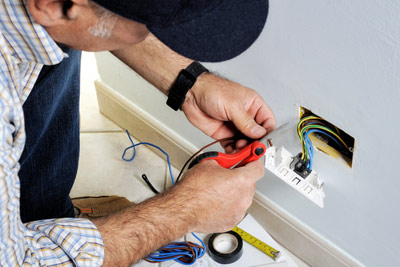How to Make Carpet Look Fluffy and New
When it comes time to put your home on the market, make your property stand out by removing clutter, making necessary repairs, and cleaning your residence from top to bottom. One of the first things buyers may notice when entering a home is the condition of the carpeting, so make that a main focus of your cleaning efforts. A thorough shampooing, vacuuming and grooming will erase years of wear and tear and make your carpet look fluffy and new.
Remove the clutter from the carpeted rooms you’ll be cleaning. Store the items in another part of the house or arrange to use a storage facility. You can temporarily move large furniture pieces, like a bed or a dresser, if you wish to clean under them.
Get on your hands and knees and examine your carpet closely. Crawl around the room, and cut any threads that are sticking up with a pair of sharp scissors. Do not pull up the thread when cutting it; lay the scissors perpendicular to the carpeting and cut to even the surface.
Spray hardened stains with a stain remover formulated for carpeting. Leave the cleaning agent in place for the amount of time specified on the instructions. Blot with a rag to absorb the cleaner and the stain.
Place an ice cube onto dented areas of the carpet that were underneath furniture. Allow the ice cube to melt completely.
Blot the wet area gently with a paper towel until no more moisture can be absorbed. Avoid pressing the towel into the carpeting, which will reinforce the dent. Run the edge of a spoon against the direction of the dented carpet to fluff it up.
Wet a hand towel and wring out the excess liquid. Lay the towel over the dented carpet. Heat an iron to the cotton setting, and gently iron the towel for one minute, concentrating on the area above the dent. Leave the towel in place until it dries. Remove the towel, and fluff the area with your hand. You can try this method as an alternative to using ice cubes.
Vacuum the carpeting to suck up all the dust and dirt before shampooing. Pay attention to high-traffic areas, as well as corners and spaces where the carpet meets the wall. Use an attachment, if necessary, to get suction into spots the vacuum can’t adequately cover.
Fill your carpet shampooer with the amount of water and cleaning solution specified by the manufacturer.
Begin shampooing the carpet in the farthest area from the exit doorway. Go back and forth slowly in straight lines, working your way toward the door so you don’t have to step on the damp carpet to leave.
Allow the carpet to dry completely.
Sprinkle an unscented or scented carpet deodorizer over the entire floor. Leave the powder on the carpet for the amount of time specified on the instructions.
Vacuum the carpeting one last time to suck up the deodorizing powder and any other cleaning residue and dirt.
Return any displaced furniture to the room.

How long should carpet last?
While there is no definitive answer to the question of how long a carpet should last, the quality of the carpet and where it is used are among the factors that can make a significant difference.
A carpet in a spare bedroom that is rarely used will last much longer than one in a commercial building with a high footfall. The cheapest carpet you can buy will wear out much more quickly than a premium quality carpet, meaning paying as little as possible may be a false economy.
How often should you replace your carpet?
Though you cannot predict when a carpet needs replacing, there are signs that it is time to replace it. A modern carpet should last between five and fifteen years, but how long a carpet actually lasts depends on the quality of its construction and the level of foot traffic.
If there are threadbare areas or immovable stains, then it is time to replace your carpet. Strong odours that remain after deep cleaning may also be a sign that it’s time for a new one.
If the carpet pile stood up when new and is now flat, this indicates that the carpet is wearing out. A carpet may look a lighter shade in some areas than others. A faded carpet may not necessarily need replacing, but if aesthetics are important, it is a good idea to change it.
How long does a carpet last in a buy-to-let?
Some landlords do not install carpets in buy-to-let property because they prefer solid flooring like laminates and vinyl, which are easy to clean and less prone to staining. This may be a good idea for multi-occupancy property for young people who have parties or invite their friends over regularly. Carpet in these properties gets lots of use and if wine, coffee and other split liquids are not cleaned up promptly, the carpet can soon look stained.
For the more luxury end of the buy-to-let property market, tenants expect good-quality furniture and fittings. It is appropriate for these properties to have good quality carpets, perhaps even wool ones. Provided that the tenants regularly clean the carpets and look after them, the carpets should last a long time.
If a carpet is a little worn, some landlords like to replace them when tenants change. If the carpet is not replaced, it probably needs a thorough clean before a new tenant arrives.
How often should a carpet be cleaned?
Cleaning helps to prolong the life of a carpet. Regular vacuuming, at least once a week or more will keep the carpet free of loose dirt and dust, but dirt can get embedded at the bottom of the pile. To remove ingrained dirt, the carpet should be professionally cleaned. You could hire a carpet cleaning machine and do it yourself, but this may not be as thorough a job as a professional using an industrial-grade carpet cleaner.
Professional carpet cleaning should be carried out at least once a year, but every six months for a heavily used carpet. A deep cleaning may be required more frequently for carpets in commercial premises. Some carpet warranties will specify that the carpets must be cleaned regularly, otherwise the warranty is void.

What Type Of Carpet Is Likely To Last The Longest?
There are several factors that affect the durability of a carpet. Firstly, the fibre, with nylon or wool lasting longest. Then there is the weight and density of fibres. By and large, dense fibre heavyweight carpets will last longer.
The carpet fibres are twisted on most good carpet. Look for a carpet with a twist level of seven twists per inch or more.
There is no difference between how long a light-coloured carpet lasts compared to a dark one, but of course stains show up more on light colours. A pattern carpet may camouflage stains.
If a carpet doesn’t look dirty, there may be a temptation not to clean it as often as a light coloured one. Remember, whether you have a light or dark colour carpet, both need to be cleaned regularly if you want the maximum lifespan for the carpet, and ensure good hygiene in the home.

Signs It’s Time To Replace Your Carpet
1. A Lot Of Visible Stains
It’s possible to hide a couple small stains under furniture. But, if you’re scrambling to move things around to cover up multiple severe stains, it’s time for new carpet.
This is especially true if the stains persist after a professional cleaning. Most carpets now come with a stain-resistant finish. This protection fades with time, though, leaving you vulnerable to potential messes.
Trying to remove stains with DIY recipes gleaned off of the Internet will usually make them worse. The same is true for store-bought cleaning products, which often contain harsh chemicals.
2. Old Carpeting And Wear And Tear
You might be using furniture and small rugs to cover up not only stains but also tiny rips and tears. If there are just a few small rips, you can probably get by.
But, if there’s matted carpet, large tears, or significant wear and tear on your major walkways, it’s time for new carpet.
If it’s matted down, and the carpet is made from polyester, there’s no way to fluff it back up again. Polyester doesn’t work like that.
What’s more, older carpets that have seen a lot of foot traffic generally can’t be restored. These are all signs that it’s time for a replacement.
3. Your Carpet Has A Funky Smell
If you have a pet, your carpet may tend to be a bit smelly. But, after a professional cleaning, those smells should go away. If not, the odor has penetrated deep into the carpet fibers, the carpet pad, or even the sub-floor.
You may also have a mold or mildew problem underneath the carpet. Again, that means you have to replace the carpeting.
Furthermore, older carpets tend to trap dirt and dust more than newer ones. If yours is on the older side, and smells persist, it’s also time for something new.
4. Don’t Forget About The Carpet Padding
When thinking about your carpet, it’s easy to forget the padding underneath. But, it’s the padding that helps support the carpet, making it comfortable to walk on and lay down on.
As mentioned above, cleaning the carpet doesn’t necessarily mean the padding gets cleaned as well. In addition, if you spot any unevenness or wrinkles in your carpet, it’s a sign your padding is old and needs to be replaced.
If the carpet is still in good condition, maybe you can replace just the padding. If not, it’s time for both items to go.
How often you should vacuum your carpet depends on the level of traffic and activity in your home.
Once per week should be the minimum that any household should vacuum its carpet. For homes with high traffic or pets, more frequent vacuuming will be necessary, likely twice or even three times per week. This will release allergens such as dust and pet hair from the carpet fibers and will help to keep your carpet looking and performing its best.
Proper Technique
Before you begin vacuuming your carpet, walk through the space looking for small objects on the carpet that are too big to be vacuumed up (such as small toy pieces, coins, paper clips, etc.). These items should be picked up by hand to avoid the possibility of their getting caught in the vacuum and impairing suction, or causing damage to the vacuum.
Don’t Rush
As you vacuum your carpet, pass the vacuum cleaner back and forth slowly. When there are so many other chores and duties requiring your time, it can be very tempting to move the vacuum as quickly as you can, to speed up the process. However, this does not allow the vacuum adequate time to pick up everything in the carpet fibers, and so it will not be as effective.
Instead, run the vacuum slowly in one direction, and then pull it back towards you. Move on to the next section of carpet, allowing the vacuum to slightly overlap the area you just cleaned, to allow for the lack of brush or suction at the very edge of the vacuum head.
Reverse
Continue this way until the entire area is finished. For best results, repeat the process in the opposite direction i.e., if you originally vacuumed in a north-south motion, turn and vacuum east-west. This is not necessary every time that you vacuum but is a good idea every once in a while to ensure a nice deep clean.
Be sure to empty the canister or vacuum bag when it gets full. A full bag or canister will decrease the suction power of your vacuum, causing all of your work to be less effective. Try not to let it get more than three-quarters full, to ensure the best performance of your vacuum.





















